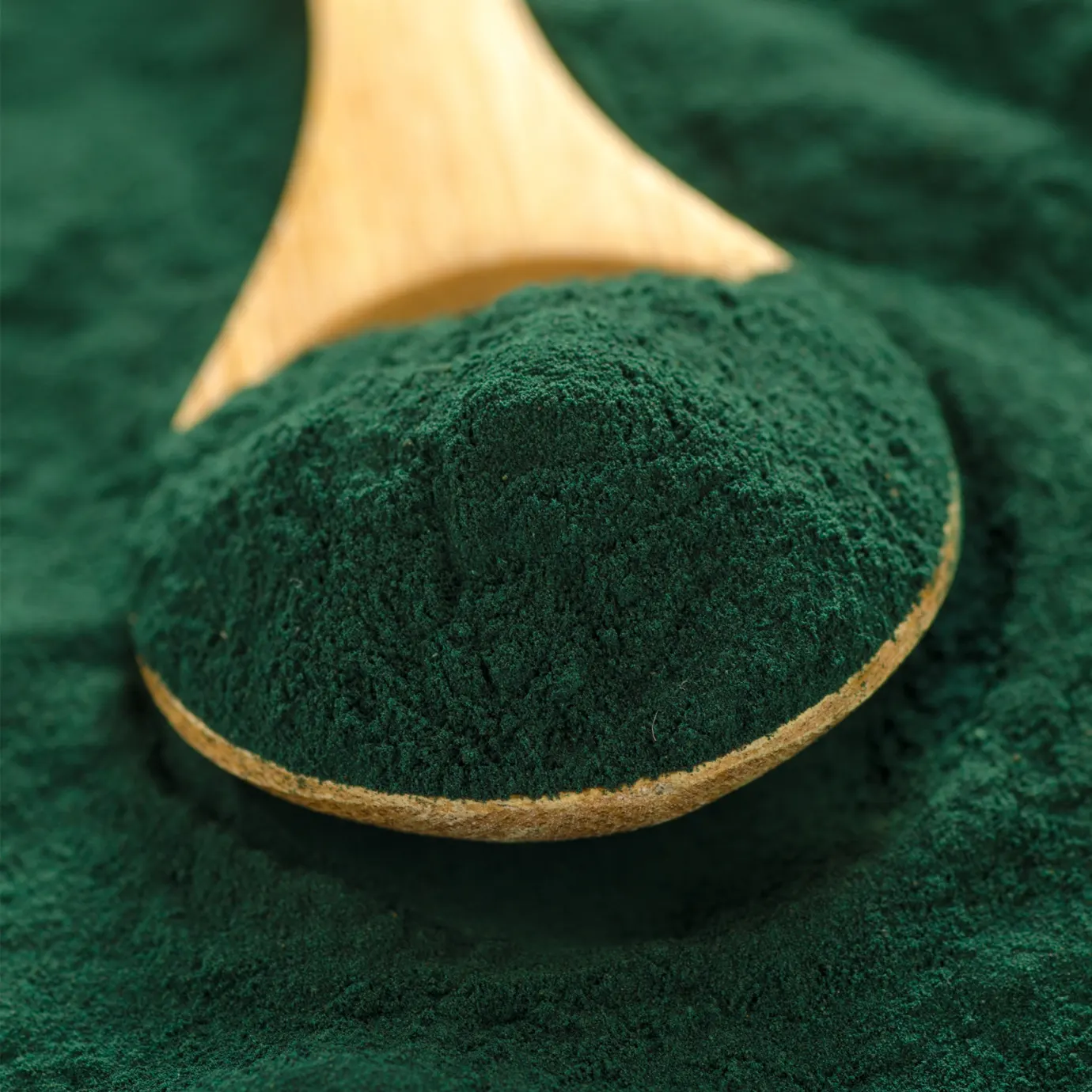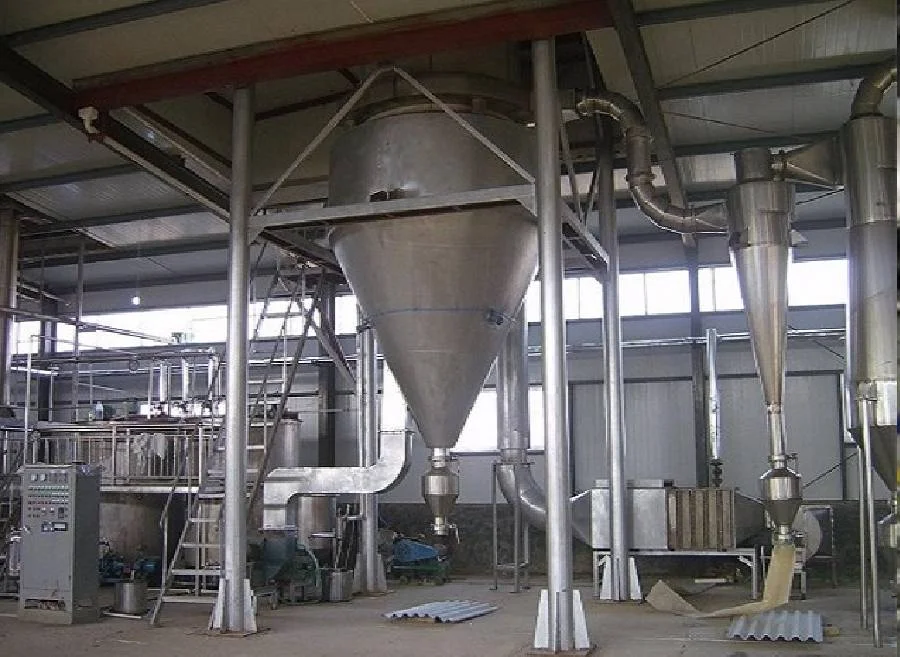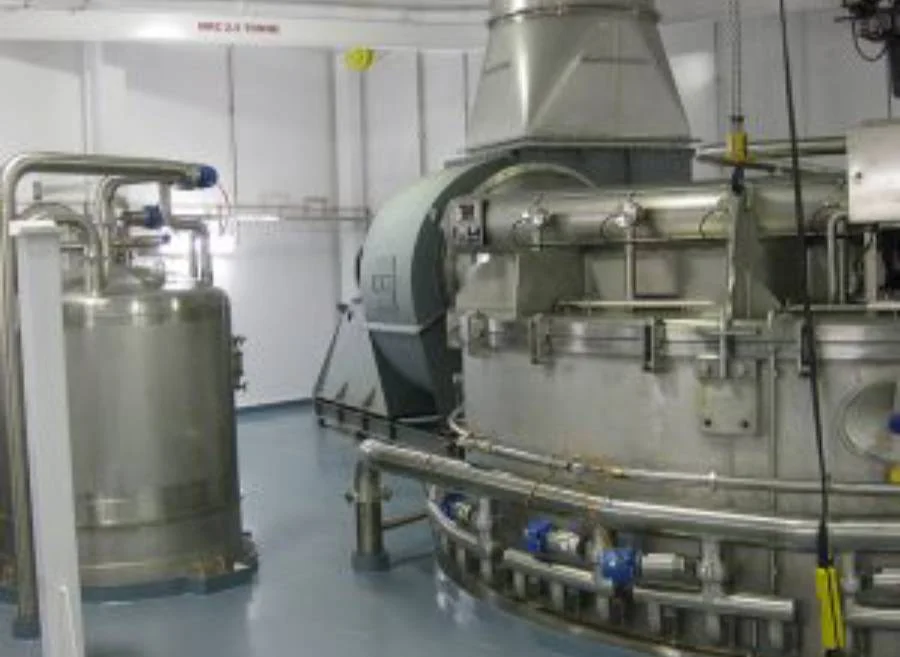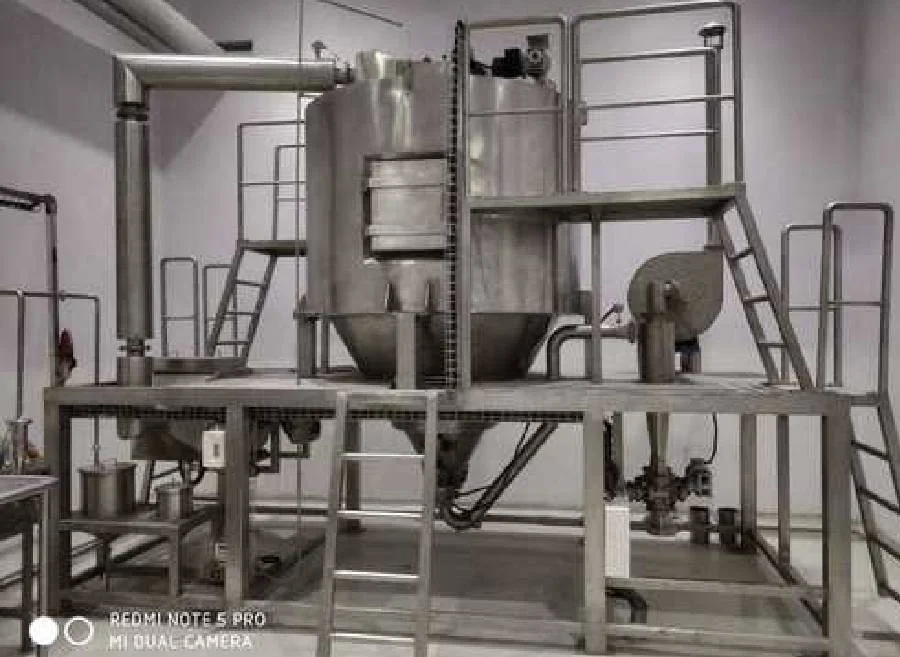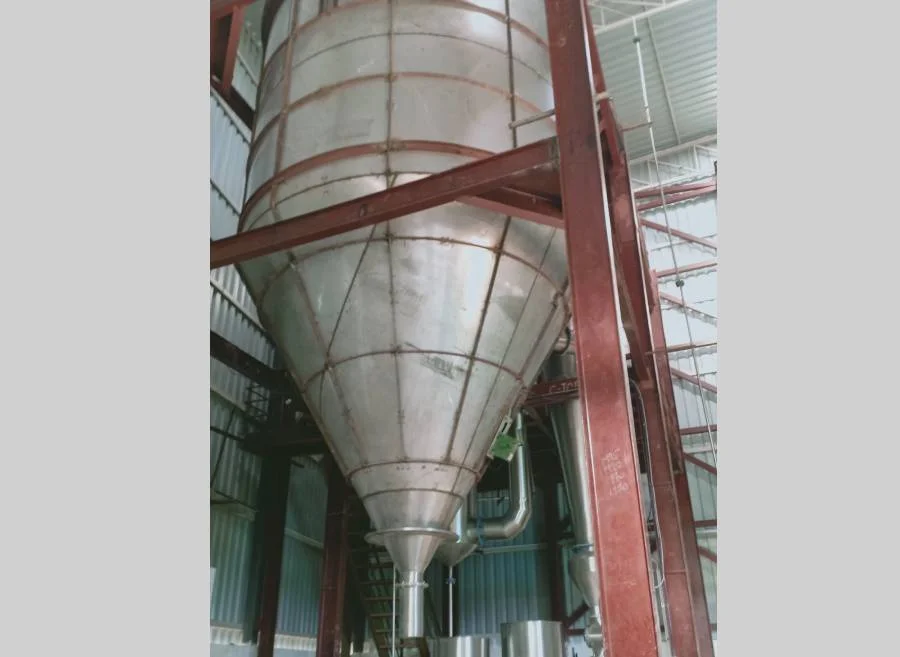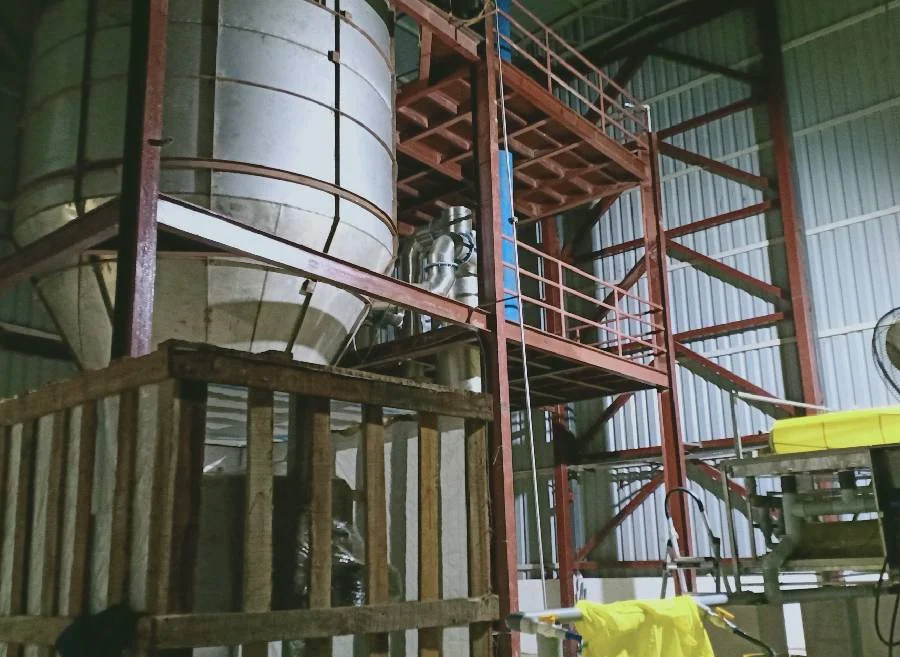Customized Spray Drying for Rapid and Reliable Output
Spray drying is a critical step in spirulina processing, especially when working with thick cake materials post-dewatering. Our custom spray dryers are engineered to handle this exact challenge. Whether you’re processing 5 kg/hr or scaling up to 100 kg/hr, our system delivers consistent performance with ultrafast drying times—less than 7 seconds per cycle.
Equipped with a specialized feeding system, our dryers streamline input flow, reduce energy usage, and eliminate manual handling. From R&D units to full-scale spirulina farms, these machines adapt to your batch size, ensuring uniformity and minimized nutrient degradation.
How Our Spray Dryers Maximize Spirulina Output
Engineered for Thick Cake Materials
Our systems are built to handle high solid-content slurry with ease, making them ideal for spirulina post-vacuum or assisted dewatering.
Adaptable for Every Farm Size
With capacity ranging from 1 kg/hr to 100 kg/hr, you can scale without compromising efficiency. Smaller farms save energy; larger ones gain speed.
Seamless, Single-Setting Control
Each unit is designed to run on a one-time calibrated setting—no need for complex adjustments. Set it once and operate for years.
Ultrafast Drying with Minimal Loss
Drying time is under 7 seconds, drastically reducing microbial growth risk while preserving pigment and protein content.
Fuel-Efficient, Operator-Free
Zero-labor operation, 90% fuel efficiency, and online production support make it one of the most cost-effective drying solutions in the industry.
Auto Discharge,
Zero Hassle Dewatering
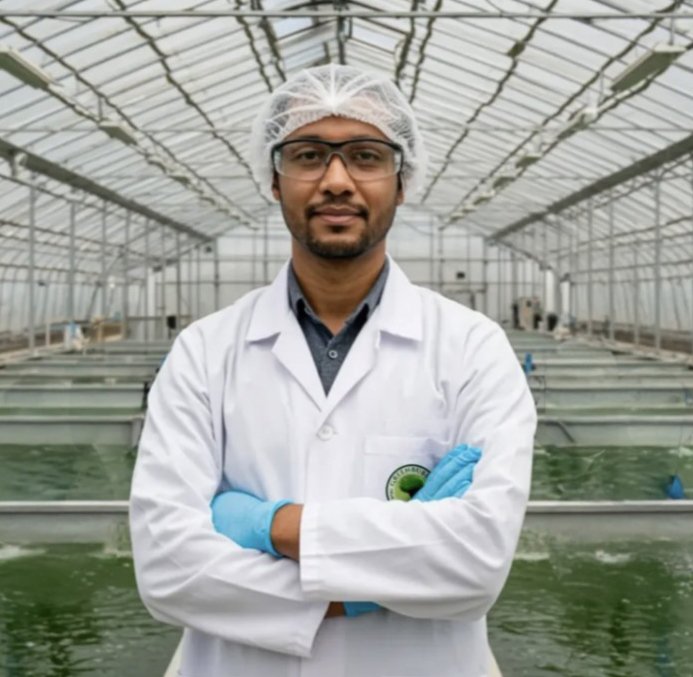
7-Second Drying Cycle
Accelerates throughput with minimal degradation of nutritional value.
Custom Feed System
Enhances drying consistency while reducing operational and capital expenses.
Modular Capacity Options
Suitable for 1 kg/hr to 100 kg/hr needs.
Plug & Play Design
Easy setup, minimal training required.
Zero-Labor Automation
No need for manual operation—fully autonomous control.
Choosing the right dryer can drastically improve your spirulina’s shelf life, nutritional integrity, and overall profitability. At Greenbubble, our spray dryers are tailored for the unique needs of spirulina farmers—balancing speed, energy savings, and operational ease. From custom batch sizing to fuel efficiency and no-labor operation, every element is designed to help you scale confidently without sacrificing quality.
Whether you run a compact facility or a full-scale farm, our dryers offer flexibility without compromise. With just one-time settings and integrated automation, you reduce operator error while boosting batch consistency. Plus, with support for online production, your spirulina cake can move directly from dewatering to drying without delays.
Ready to upgrade your spirulina processing line?
Let’s connect and show you how our spray dryers can elevate your output while reducing cost.
Spirulina Farming FAQs
Everything You Need to Know About Commercial Spirulina Farming – From Setup to Profitability!
Following parameters need to be met while selecting land to set up a plant.
- low cyclone area
- flat land
- road approach
- less rainfall
- no hills or mountain shadow
- high temperature and dry land
- Mild or higher temperatures in winters
- water source (preferably ground water)
- Spirulina usually grows in hot & extremophile conditions and can sustain very high temperatures
Both Central & State Governments have multiple schemes and subsidies depending on the zone or region where the project will be built. These schemes are available with capital subsidy incentive, interest subsidy incentive and as financing schemes – subject to availability based on the applicant’s profile, state & Region.
Yes, the demand for spirulina in India is rising due to its superfood status and benefits like high protein (60%+), antioxidants, balanced amino acid profile and essential vitamins. The nutraceutical, pigment industries and cosmetic industries drive the bulk demand, with additional interest from the animal feed, aquaculture sectors and bio fertilizers. Health-conscious consumers are increasingly seeking organic spirulina, making certified farms more competitive. However, export markets (EU, USA) offer higher profit margins and volumes because of higher consumption and awareness in their respective countries.
Spirulina quality is assessed in laboratories for key parameters like protein content (≥60%), phycocyanin levels (≥15%), heavy metals (lead, mercury, arsenic), microbial contamination, and purity. The Certificate of Analysis (COA) from third-party labs ensures compliance with global standards like USDA Organic, EU Organic, GMP, and HACCP. A simple at-home test includes checking colour (deep green-blue) and smell (fresh, non-fishy). For commercial-grade quality assurance, regular lab testing and batch tracking are essential.
Spirulina is relatively easy to cultivate under the right conditions, but maintaining high quality can be challenging. It thrives in high-pH, mineral-rich water with consistent agitation and ample sunlight. However, farms must closely monitor for contamination—such as heavy metals, harmful bacteria, and cross-contamination with other algae. Maintaining an optimal pH level (between 9 and 11) and using controlled drying methods are essential to preserve its nutritional value. Scaling up production requires automation of processes like filtration, harvesting, drying, and packaging, making commercial farming significantly more complex than small-scale setups.
Yes, India exports spirulina, but it requires strict regulatory compliance. To export, farms must obtain FSSAI, USDA Organic, and EU Organic certifications, ensuring compliance with global quality standards. Countries like the USA, EU, and Japan demand batch tracking, third-party lab testing (COA), and HACCP/GMP practices to verify purity. Organic-certified spirulina fetches higher prices, but maintaining consistent quality, low contamination levels, and proper documentation is crucial for global acceptance.
The ideal tank size for spirulina farming depends on production goals. Small-scale hobby farms can start with 1,000-5,000 litres (10-50 sq. m. tanks), while commercial farms require multiple tanks ranging from 4lakh to 8lakh litres for viability and to meet market demand. Tanks should be food-grade, contamination-free, and have an efficient agitation system to ensure even nutrient distribution. The depth should be around 20-30 cm, allowing optimal light penetration for photosynthesis. Regular pH, temperature, and contamination checks are crucial for consistent yields.
There are multiple Spirulina species, and the best one depends on the intended use. Arthrospira platensis is widely used due to its high protein content (60–70%), β-carotene, and phycocyanin levels. It is also GRAS-approved by the FDA, which makes it easier to market and sell. When choosing Spirulina, opt for organic-certified, lab-tested products with high phycocyanin content (≥15%) for the best health benefits. Low-quality, mass-produced Spirulina may contain toxins, heavy metals, or reduced nutrient levels. Therefore, selecting products that come with a valid Certificate of Analysis (COA) is essential.
Spirulina is expensive due to its high-quality control standards and nutrient-rich composition. Factors like pH balance, controlled agitation, organic compliance, and industrial nutrition preserving dryers increase production costs. Organic-certified spirulina requires third-party testing (HACCP, GMP, USDA Organic) for contaminants like heavy metals and bacteria, adding to expenses. Additionally, import restrictions and packaging for nutrient retention contribute to the high pricing. Despite the cost, its superior nutritional profile and increasing demand justify the premium.
Countries like the Japan, Thailand, and China lead in commercial spirulina production. France and Germany also produce premium-grade spirulina in small scales, often cultivated in controlled greenhouse environments. Indian spirulina has strong potential, but farms must focus on organic certification and contamination-free production to compete with global suppliers.
Yes, the demand for spirulina in India is rising due to its superfood status and benefits like high protein (60%+), antioxidants, balanced amino acid profile and essential vitamins. The nutraceutical, pigment industries and cosmetic industries drive the bulk demand, with additional interest from the animal feed, aquaculture sectors and bio fertilizers. Health-conscious consumers are increasingly seeking organic spirulina, making certified farms more competitive. However, export markets (EU, USA) offer higher profit margins and volumes because of higher consumption and awareness in their respective countries.
To start a spirulina farm, you need a warm climate (25-50°C), Fresh potable water and a contamination-free environment. Begin by setting up growth tanks (preferably food-grade material), an agitation system, and an organic nutrient supply. Ensure regular water testing, lab analysis for purity, and compliance with organic standards for targeting premium markets. Drying and packaging should use low-heat methods to retain nutrients. Marketing strategies should focus on B2B (nutraceuticals, pigment, cosmetics) and direct-to-consumer (powders, tablets, supplements). Hiring consultants can help you cover all bases and avoid costly mistakes during setup and operation.
The cost of starting a spirulina farm varies based on scale and automation level. A small-scale Hobby farm (1,000 sq. ft.) may cost around ₹5-10 lakh, while a commercial setup can exceed ₹1CR due to expenses like land preparation, building costs, Machineries, Raceway tanks construction, agitation systems, working capital, electrical and plumbing, lab setup many other management and administrative expenses. Key costs include Civil works, harvesting, drying system (Industrial nutrition preserving dryers), certification expenses (like FSSAI, USDA Organic, EUO, ECOCERT, HACCP, GMP) and working capital. While initial investment is high, proper planning, market positioning and quality assurance can yield significant returns.
Spirulina farming can be highly profitable, but success depends on factors like production scale, automation, organic certification, Quality and market demand. While some claim an ROI of 300% within months, realistic profitability takes 2-3 years due to high setup costs for infrastructure to reduce labour dependency, increased up time and meet the quality standards. Organic-certified spirulina fetches premium prices in domestic and international markets, making it a viable long-term investment. However, strict quality control, regulatory compliance, and a reliable distribution network are key to ensuring consistent profitability.
Related Services
Let us help you
